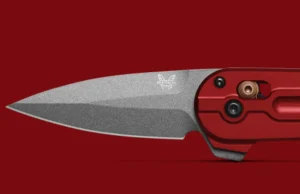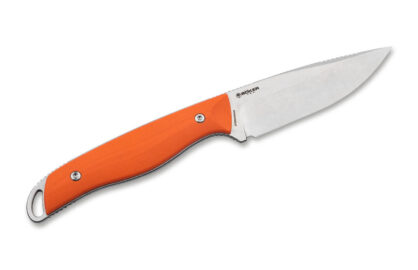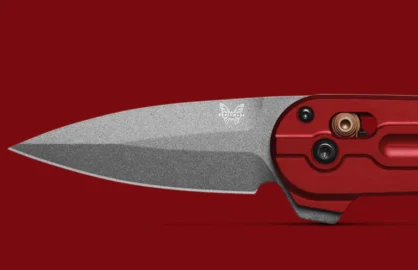Choil or No Choil? SURVEY RESULTS

KnifeNews Ultimate Folder Survey Results Part 6: Choil or No Choil?
Brought to you by BladeHQ
Part 1: Lock Preferences on Folding Knives
Part 2: Favorite Knife Handle Materials
Part 3: Lanyard or No Lanyard?
Part 4: Price?
Part 5: Tip Up or Tip Down Carry?
For Part 6 of the Ultimate Folder Survey, we turn our attention to the base of the cutting edge: the choil. What is a choil? Strictly speaking, “it is simply defined as the area between the cutting edge and the tang,” according to knife maker Jay Fisher.
A ‘finger choil’ is shaped specifically to allow for a finger to safely grip the blade in that area. Choils have been common on fixed blades for decades, and found their way onto folding knives more recently. On a folding knife, a finger choil is often made by shaping half of it from the blade and the other half from the handle – a so-called 50/50 finger choil. Popular knives with finger choils include the Spyderco Sages and Strider SnG.
A ‘sharpening choil’ is much smaller than a finger choil. It is designed to allow for consistent sharpening all the way to the end of the cutting edge. Without a sharpening choil, it can be challenging to fully sharpen the base of the cutting edge where it meets the unsharpened ricasso.
FINGER CHOIL – GOTTA HAVE IT ARGUMENTS
On a smaller folding knife, a choil effectively extends the usable handle space, allowing for a more comfortable, full-hand grip.
On a larger knife, a forward finger choil allows the user to safely ‘choke up’ on the blade for finer control of the cutting edge.
On a slipjoint or hard-use folding knife, a finger choil acts as a safety feature. Were the blade to close on the hand during use, the unsharpened choil would contact the hand first, preventing the knife from closing further and the sharpened portion of the blade from causing injury.
NOT ON MY BLADE, THANKS
In order to give your fingers a safe place to rest, a finger choil shortens the sharpened portion of the blade. A knife with a choil will give you less cutting real estate overall than one without.
Choils are ergonomic instructions: they obligate the user to hold the knife in a specific way. If your hands don’t fit the choil – tough luck! A knife without a choil can offer more ‘neutral’ ergonomics that allow for many different grips.
The survey data indicates that KnifeNews readers don’t take a ‘hard line’ position on choils; nearly half of respondants indicated that a choil on a knife “doesn’t matter.” However, those that do prefer finger choils have a significant majority over those who say they don’t want one.

Knife featured in image: Cold Steel Tuff Lite Serrated



















0 comments